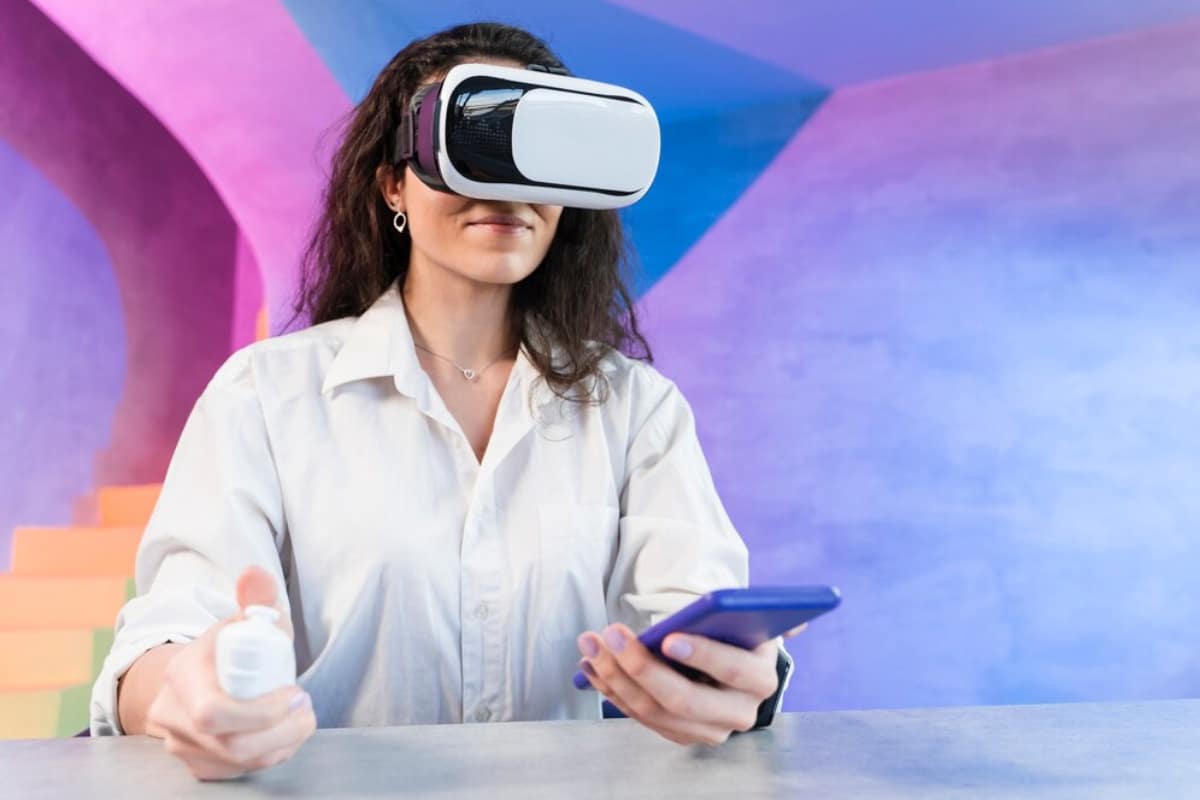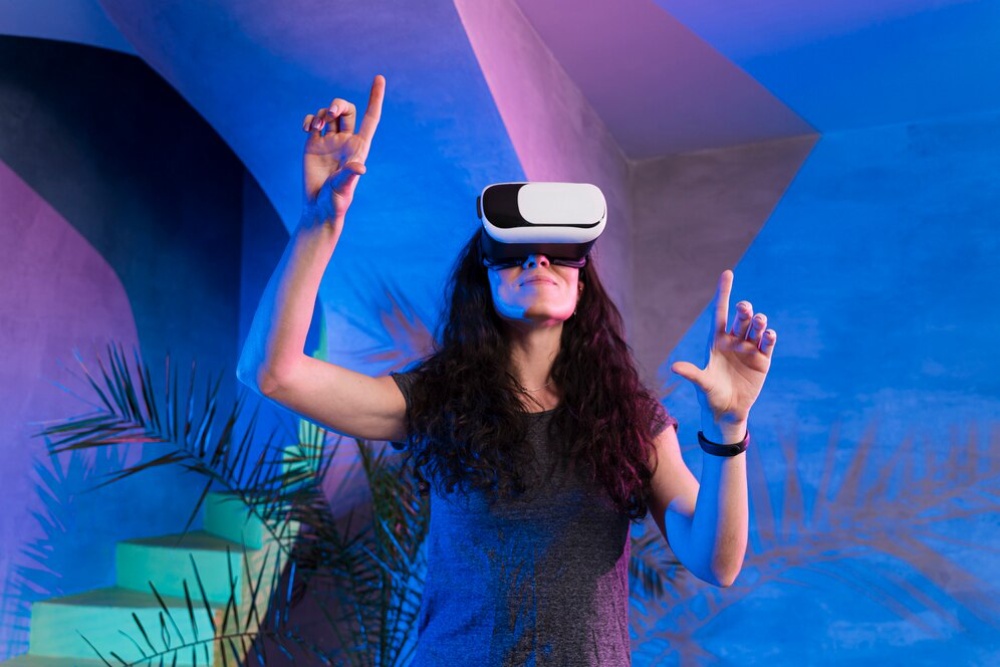
The Rise of Virtual Showrooms in Retail
Stepping into the Digital Display Window
Virtual showrooms are changing how retailers showcase their products. In today’s world, digital transformation is essential, not optional. As fewer people visit physical stores and online shopping takes over, the retail industry is finding new ways to connect the experience of shopping online with in-store visits. Virtual showrooms blend exciting shopping with the ease of online retail.
But what exactly is a virtual showroom? It’s a 3D digital space where customers can explore products online like they would in a store. Brands in fashion, furniture, beauty, and automotive are using this technology. It helps them engage customers, cut returns, and stand out in a crowded online market.
In this blog, we’ll look at how virtual showrooms are changing retail. We will discuss the technology behind them, real-world uses, benefits, and challenges. Finally, we’ll explore what the future might bring for this exciting trend. Whether you’re a retailer looking to innovate or a curious consumer, there’s something valuable here for you.
Understanding Virtual Showrooms
What is a Virtual Showroom?
A virtual showroom is an interactive, web-based 3D environment that replicates the look and feel of a physical retail space. Unlike a standard e-commerce website, virtual showrooms provide:
- 360-degree views of products
- Interactive hotspots with detailed product info
- Live chat or virtual assistance
- Integration with shopping carts for instant purchases
- Augmented or virtual reality elements for enhanced immersion
These digital spaces let brands show off their collections. It feels premium, personal, and high-tech.
The Evolution of Virtual Showrooms
The concept isn’t entirely new. Car brands have used virtual configurators for a while. Also, fashion brands tried virtual catwalks years back. However, the technology has now evolved to offer:
- Photorealistic 3D rendering
- Cross-device compatibility (desktop, mobile, VR headsets)
- AI and machine learning integrations for personalised experiences
- Integration with CRM and marketing tools
The COVID-19 pandemic sped up the change. Brands quickly adopted immersive technologies. Today, virtual showrooms are no longer a novelty. They are becoming a mainstream retail strategy.
Technologies Powering Immersive Retail
1. 3D Modelling and Rendering
At the heart of every virtual showroom is high-quality 3D content. Products are digitally scanned or modelled to ensure they appear accurate and detailed.
- Tools like Blender, Unity, and Unreal Engine help render realistic textures and lighting.
- 3D product views allow customers to inspect items as if they were physically handling them.
2. Virtual Reality (VR) and Augmented Reality (AR)

- VR headsets like Oculus or HTC Vive enable full immersion, which is ideal for industries like real estate or automotive.
- AR experiences, accessible via smartphones, let users visualise products in their own space—perfect for furniture and décor retail.
3. Artificial Intelligence (AI)
AI enhances user experience by:
- Recommending products based on behaviour
- Offering personalised tours through the virtual environment
- Powering chatbots and virtual shopping assistants
4. Cloud Computing and WebGL
These technologies allow high-performance rendering and accessibility without requiring high-end devices. It means users can access these experiences on standard web browsers, making them highly scalable.
Benefits of Virtual Showrooms for Retailers
1. Enhanced Customer Engagement
Virtual showrooms are more engaging than traditional e-commerce pages. Their interactivity keeps visitors on the site longer and increases the likelihood of a purchase.
Example: A study by Shopify found that 3D product images increased conversions by up to 250%.
2. Reduced Return Rates
When customers can inspect items from every angle and see how they fit into their environment, they’re less likely to return them. This is particularly beneficial in:
- Home furnishings
- Fashion and accessories
- Automotive parts
3. Cost Efficiency Over Time
While the initial investment can be substantial, virtual showrooms offer long-term savings through:
- Reduced need for large physical retail spaces
- Lower staffing and overhead costs
- Scalable, reusable digital assets
4. Global Reach
![]()
A virtual showroom can be accessed from anywhere in the world. This expands market reach and enables international sales without requiring a physical presence.
5. Brand Differentiation
Offering a virtual showroom positions a brand as innovative and forward-thinking. It enhances brand perception, especially among tech-savvy consumers.
Real-World Case Studies
Audi’s Digital Showrooms
Audi launched virtual showrooms. Customers can explore models, customise features, and simulate test drives. Sales teams guide users via live video or chat, merging human and digital support.
IKEA’s Virtual Home Experience
IKEA combines AR and VR to allow customers to place furniture in their homes virtually. The result? Better purchase confidence and a smoother shopping experience.
Dior’s 3D Fashion Boutiques
Dior launched an immersive fashion showroom online. Customers can browse collections, zoom in on garment details, and watch catwalk clips.
Challenges and Limitations
1. High Development Costs
Creating a virtual showroom requires investment in the following:
- 3D modelling and rendering
- Software development
- Maintenance and updates
2. User Accessibility
Not all consumers have devices that can run advanced virtual environments seamlessly. Brands need to optimise for mobile and low-bandwidth users.
3. Learning Curve
Older consumers or those unfamiliar with 3D interfaces may find navigation challenging. Simplified UI/UX design is critical to success.
4. Data Privacy
Like all digital platforms, there are worries about user tracking, data collection, and following laws like GDPR.
Strategies for Successful Implementation
1. Start Small and Scale
Pilot your virtual showroom with a select product line or seasonal collection. Measure engagement and sales impact before expanding.
2. Focus on User Experience
Ensure intuitive navigation, fast load times, and mobile compatibility. Add real-time chat support to guide users.
3. Integrate with Existing Systems
Link your virtual showroom with:
- CRM tools
- Inventory management systems
- Payment gateways
This ensures seamless transactions and unified customer data.
4. Promote Strategically
Leverage:
- Email marketing
- Social media
- Influencers and brand ambassadors
Encourage existing customers to try your new experience and share it.
5. Offer Exclusive Content
Host exclusive virtual events, product launches, or behind-the-scenes tours that are only available in the showroom. This builds hype and encourages visits.
The Future of Virtual Shopping Experiences

The next decade will bring even more innovation:
- Metaverse integration: Retailers may build stores within metaverse platforms like Decentraland or Meta Horizon.
- AI avatars: Personal shopping assistants powered by advanced AI could provide tailored recommendations.
- Sensory tech: Haptic feedback and smell simulation could eventually mimic touch and scent.
As technology gets easier to use, virtual showrooms will change. They will go from luxury experiences to tools we use every day.
Building a Competitive Edge Through Innovation
Retailers who invest in virtual showrooms are doing more than keeping up—they’re shaping the future of e-commerce. They create interactive, personalised, and immersive experiences. This way, they connect more deeply with customers and stand out in a crowded digital space.
With consumer expectations growing and technology advancing, the virtual showroom is not just a trend. It’s a strategic imperative.
Conclusion: Your Retail Space, Reimagined
In a world where convenience rules and attention spans are brief, virtual showrooms blend engagement and efficiency. They let consumers engage with products like never before. Also, they help retailers innovate, stand out, and succeed.
Immersive retail experiences are here to stay. They boost customer satisfaction, expand global reach, lower return rates, and enhance storytelling.
If you’re a retailer looking to future-proof your strategy, now is the time to explore virtual showrooms. Start small, test and refine, and watch your digital presence evolve.
Ready to take your retail experience to the next level? Let’s start building your virtual showroom today.


